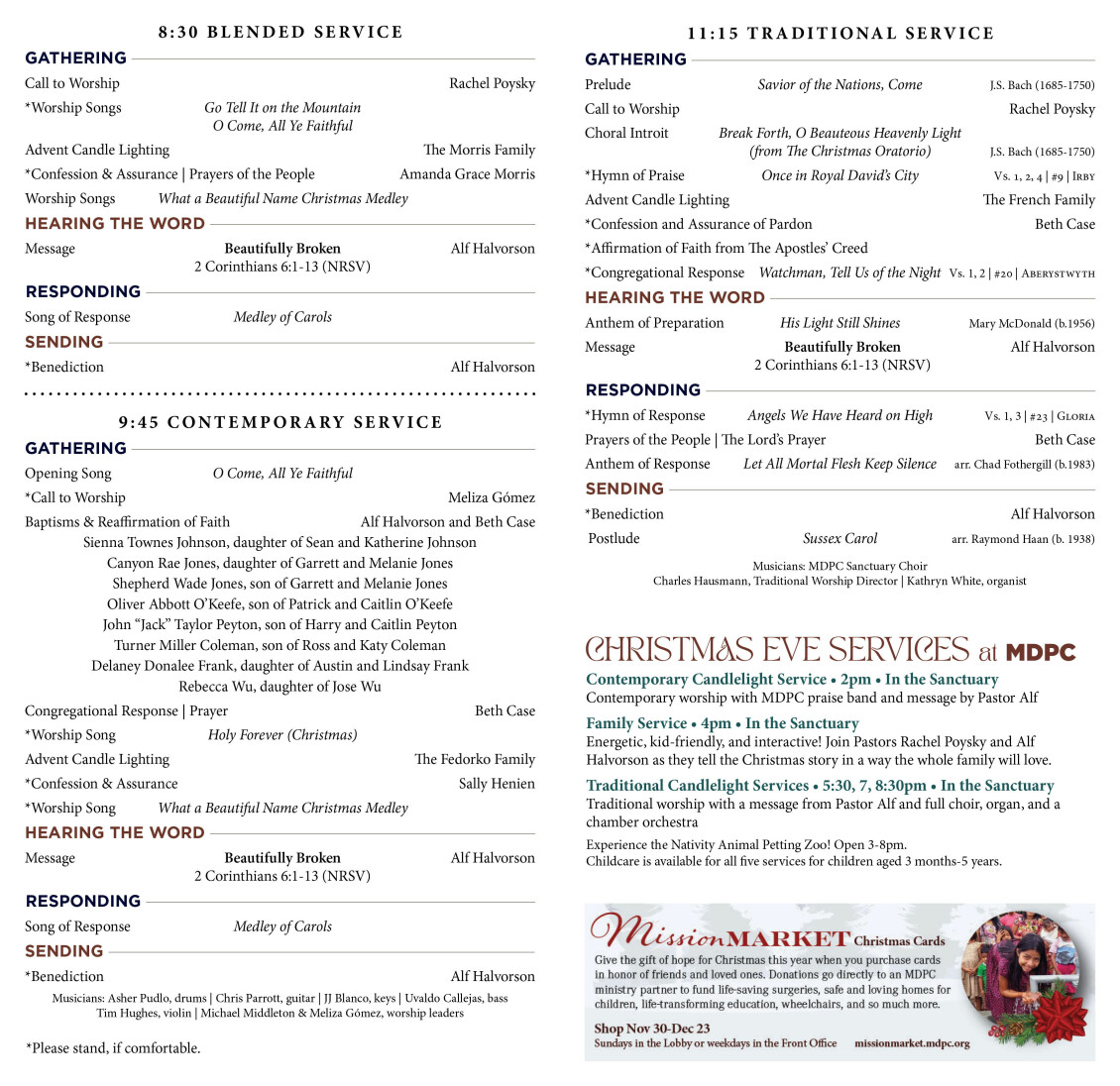Sermon Notes
Download Notes
2 Corinthians 6:1-13 | Rev. Dr. Alf Halvorson
This is the 11th message in our fall sermon series on Paul’s second letter to the church in Corinth. Last week, Paul shared the profound idea that “we are ambassadors for Christ”; that God is making His appeal of love through us to our broken and in-need world. Now, in chapter 6, Paul challenges his congregation not to let that calling be missed, or to be done in vain. He shares some of the most pointed and challenging ideas in the whole letter right here.
- When have you had a “now or never” moment, and you chose wisely? When did you miss out on something possibly grand because of fear or busyness or lack of insight at the critical juncture?
- Read 2 Cor. 6:1-13. Focus on vss. 1-2 and vss. 11-13. How would you summarize Paul’s message or main point? And how does he and his team model what he is hoping to find or draw out of the Corinthians?
- Now attend to verses 3-10. In my message, I suggested that there are four different and specific sections in Paul’s blizzard of troubles. There are internal conflicts in verse 4; external tribulations in verse 5; there are examples of the effort required to walk out the Christian life in verses 6-7; and then the paradoxical life we live if we serve, love, sacrifice, and function as ambassadors in the world in verses 8-10. What hits you about each section? And can you relate to something in each area? What? And why?
- I used some quotes and illustrations to get at the idea that we aren’t guaranteed tomorrow. We must act now. Today. Later might never come. Which quote or image hit you the most and why? Did God prompt you regarding any area of your life to make the needed move during this Advent/Christmas season?
- Where can you pray for each other? Where might you need to hold each other accountable to your best instincts and intentions? And where might you thank God and live in gratitude for Christ doing for us and our world what was best when needed?

